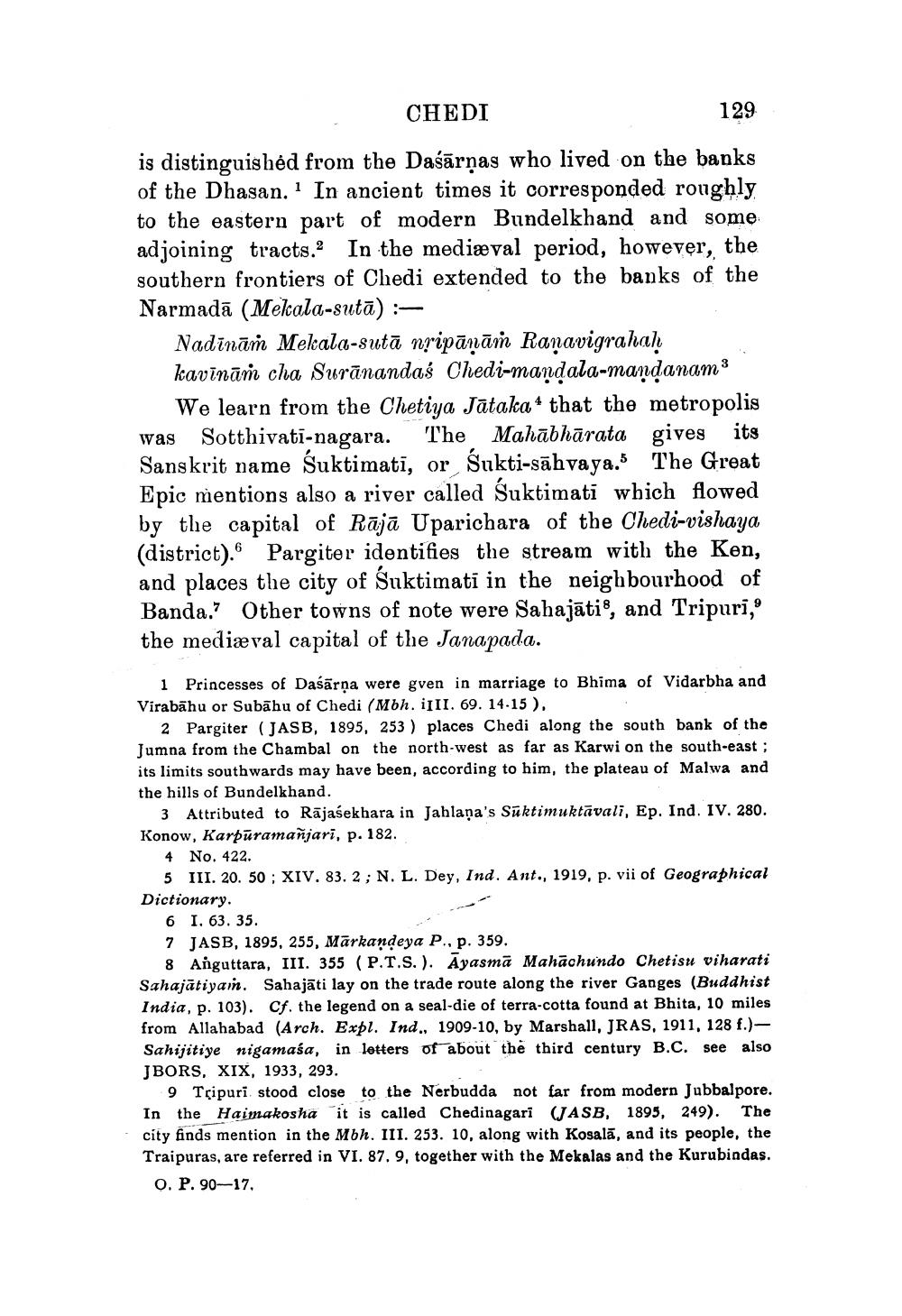________________
CHEDI
129
is distinguished from the Daśārņas who lived on the banks of the Dhasan. In ancient times it corresponded roughly to the eastern part of modern Bundelkhand and some adjoining tracts. In the medieval period, however, the southern frontiers of Chedi extended to the banks of the Narmada (Mekala-sutā) :—
Nadinam Mekala-sutā nṛipānāṁ Ranavigrahaḥ kavīnām cha Suranandas Chedi-mandala-mandanam3
We learn from the Chetiya Jataka that the metropolis was Sotthivati-nagara. The Mahabharata gives its Sanskrit name Suktimati, or Śukti-sahvaya. The Great Epic mentions also a river called Suktimati which flowed by the capital of Raja Uparichara of the Chedi-vishaya (district). Pargiter identifies the stream with the Ken, and places the city of Suktimati in the neighbourhood of Banda. Other towns of note were Sahajati, and Tripuri, the medieval capital of the Janapada.
1 Princesses of Dasarṇa were gven in marriage to Bhima of Vidarbha and Virabahu or Subahu of Chedi (Mbh. iIII. 69. 14-15).
2 Pargiter (JASB, 1895, 253) places Chedi along the south bank of the Jumna from the Chambal on the north-west as far as Karwi on the south-east ; its limits southwards may have been, according to him, the plateau of Malwa and the hills of Bundelkhand.
3 Attributed to Rajasekhara in Jahlana's Suktimuktavali, Ep. Ind. IV. 280. Konow, Karpuramañjarī, p. 182.
4 No. 422.
5 III. 20. 50; XIV. 83. 2; N. L. Dey, Ind. Ant., 1919, p. vii of Geographical Dictionary.
6 I. 63. 35.
7 JASB, 1895, 255, Markandeya P., p. 359.
8 Anguttara, III. 355 (P.T.S.). Ayasma Mahachundo Chetisu viharati Sahajatiyam. Sahajati lay on the trade route along the river Ganges (Buddhist India, p. 103). Cf. the legend on a seal-die of terra-cotta found at Bhita, 10 miles. from Allahabad (Arch. Expl. Ind., 1909-10, by Marshall, JRAS, 1911, 128 f.)Sahijitiye nigamaśa, in letters of about the third century B.C. JBORS, XIX, 1933, 293.
see also
9 Tripuri stood close to the Nerbudda not far from modern Jubbalpore. In the Haimakosha it is called Chedinagari (JASB, 1895, 249). The city finds mention in the Mbh. III. 253. 10, along with Kosala, and its people, the Traipuras, are referred in VI. 87, 9, together with the Mekalas and the Kurubindas.
O. P. 90-17.




